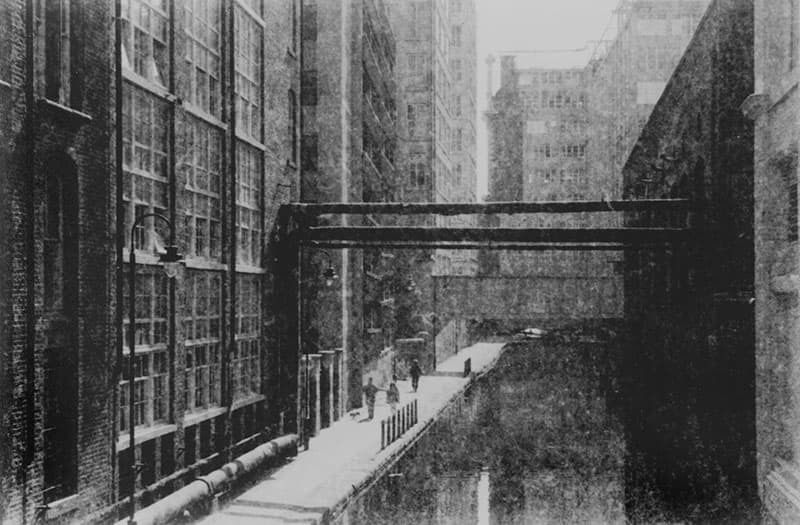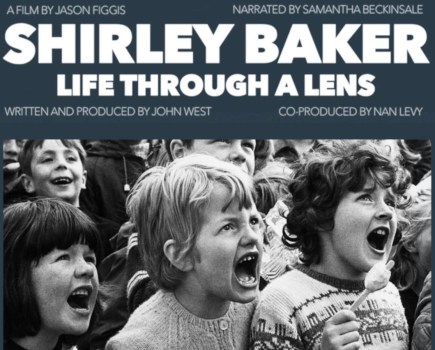Photo Insight with Andrew Sanderson

A renowned photographer, tutor, author and Ilford Master Printer, Andrew Sanderson offers practical tips on working with film and traditional darkroom techniques
This image was taken in an area of Manchester near Whitworth Street. Anyone living there will know exactly where this particular photograph was taken. The picture was produced around 20 years ago as part of a series of work about architecture in Manchester. Architectural photography, traditionally, has always been clear, crisp and shot using a large-format camera. Sometimes the image is in black & white and sometimes it’s in colour. The reason you see such vivid images is that the photographs are often produced for a client who wants to show off their building. However, I was so taken with Manchester’s architecture that I wanted to create something that was a little more expressive. It demanded to be treated in a different way.
I shot my images on 35mm and then produced paper negative prints. That is what has given the picture you see here its texture and the contrast. It has created a kind of drama, and a lot of the picture’s expressive quality essentially comes from the degradation of the image. It’s like the work from the Photo-Secessionists, who promoted photography as a fine art. It’s about achieving an impressionistic, artistic look that could be a charcoal drawing or an etching. You’re left with strong shapes. I have often found that fine detail is a slight drawback in large-format photography.
There is something lovely about using large negatives and getting beautiful prints from smooth negatives, but your subject matter has to be selected carefully. The detail can sometimes be all that people look at, which means they’re not focusing on the composition. They are just seeing what the camera can achieve on a technical level. For that reason, I’m drawn towards alternative processes such as paper negatives and gum printing.
This shot was taken from a bridge looking down onto the canal. From this perspective, at this time of day, the light was in the right place and it happened to coincide with the people you see on the left walking on the pavement. When I showed this picture to some friends they said it made them think of the kinds of German Expressionist films that appeared throughout the 1920s, particularly Fritz Lang’s 1927 film Metropolis. Once they said that, it was all I could think about every time I looked at the shot.

The inclusion of the people on the left adds a sense of mystery. More than that, it lends the image balance and a kind of symmetry. I could have waited until they were out of the frame, but something crucial would have been lost. In a sense, it would have been empty. When you’ve got figures walking in a shot, it is always a little tricky to capture them in a way that doesn’t make them look awkward. It could be that the legs look a little strange. If you’ve got three people walking, as in this shot, the timing is crucial. The legs need to be in a good position and each individual needs to be spaced out at just the right distance. If you get it wrong, it takes the edge off the image.
If you look at the gap between the buildings in the distance, there is a vertical line of sky that is reflected in the water of the canal. It’s pretty central to the shot and provides a good access point for the viewer’s eye. Then you have a cross line where the black pipes stretch from building to building. Again, they’re fairly central to the image. On the left-hand side of those pipes is a long, white, vertical line. That provides a balance with the strip of sky and its refection. There’s further balance in the slope of the roof on the right with the windows on the left. All these things are instinctive – it’s only in retrospect that I notice them.
This should be an uncomfortable and oppressive image in many ways, but because of the composition the eye is drawn, quite comfortably, into it. This is something that has to occur naturally when taking a photograph. If you think too much about composition, you’re going to miss your shot. It can also mean you become predictable in what you produce.
I’m a tutor at a college teaching photography and every so often my students will show me an image where they’ve followed the Rule of Thirds or the Golden Section. I always tell them to forget about that and create something unique, something interesting. There’s more to photography than following the rules of composition. I tell people to go into an art gallery and look at some of the beautiful paintings they have there. Look at the composition and notice how the painters don’t seem to be following any set rules. There doesn’t seem to be any established ideas of composition, so you start to ask questions. Why do these paintings work? How is my eye drawn into the scene? When you’ve looked at a lot of good work, you’ll begin to see your shots from an instinctive level.
Andrew Sanderson was talking to Oliver Atwell

If you would like to read more about paper negatives, Andrew’s book Paper Negative Photography is available from www.blurb.com, price £15







